VIDEO: From extinction’s edge to a promising future: How King County and partners put Lake Sammamish kokanee on a path toward recovery
Summary
May 15, 2025: A partnership coordinated by the King County Department of Natural Resources and Parks reported that more than 8,300 adult kokanee salmon returned from Lake Sammamish to spawn during the 2023-24 season, a dramatic increase from seven years ago when fewer than 20 returned from the lake. It is the latest promising sign that the freshwater species is on a path toward recovery following a catastrophic decline.
News
Seven years after a catastrophic decline in the number of adult kokanee salmon returning from Lake Sammamish put the native species on the brink of extinction, a partnership coordinated by King County is reporting a potential breakthrough for a sustainable recovery.
Biologists reported that more than 8,300 adult kokanee salmon returned to their spawning grounds during the 2024-25 spawning run, a stunning improvement over the 2017-18 run when just 19 returned. It was the second-highest return since King County began monitoring in 1996.
The King County Department of Natural Resources and Parks has been working with the Lake Sammamish Kokanee Work Group to enact emergency and long-range actions to ensure the survival of the unique salmon population that is important to the region’s habitat and history.
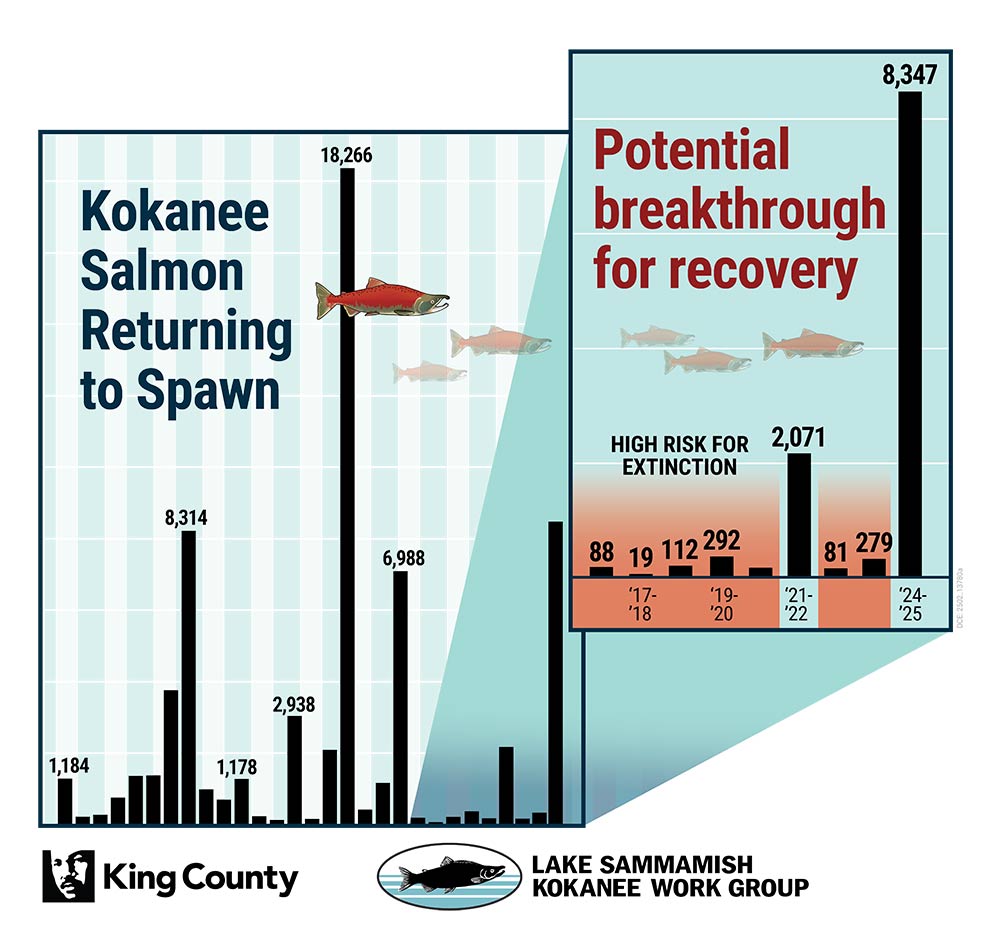
“The promising signs of a sustainable recovery for native kokanee salmon reflect the incredible work of our employees and partners – and it inspires real hope for the natural environment of our region,” said King County Executive Shannon Braddock. “While there is still more work to do, the progress we have made demonstrates what we can accomplish when we mobilize resources and unify efforts to achieve common goals.”
Experts are hopeful that returns will remain strong over the next few years given that partners – including the Snoqualmie Indian Tribe – released record numbers of young kokanee near the middle of Lake Sammamish in 2023 and 2024, on the order of 12,000 fry in both years. Surviving kokanee from those releases are expected to return to their spawning grounds over the next two years.
“For Snoqualmie people, we’re born into this, and we understand our connection to these places, to the fish, but I think that something so unique about our Lake Sammamish and our little red fish is how it brings everyone together,” said McKenna Sweet Dorman, Deputy Secretary of Snoqualmie Indian Tribe. “What we’ve been able to achieve with our surrounding communities is something really special to see.”
The recovery partners are reviewing the effectiveness of actions they have taken since May 2018, when former King County Executive Dow Constantine directed the Department of Natural Resources and Parks to enact recommendations developed by the Lake Sammamish Kokanee Work Group.
One action that appears to have paid significant dividends is removing barriers to spawning grounds in streams that feed into Lake Sammamish, installing box culverts underneath King County’s East Lake Sammamish Trail and Lake Sammamish Parkway. Another action allowed partners to keep young kokanee in a controlled setting for an extended period so they can release the kokanee near the middle of the lake during the fall when fish are larger, water temperatures are cooler, and oxygen levels are higher.
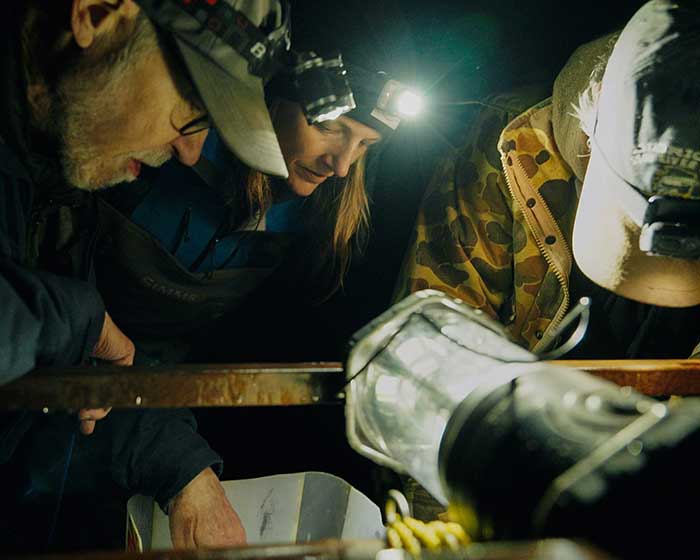
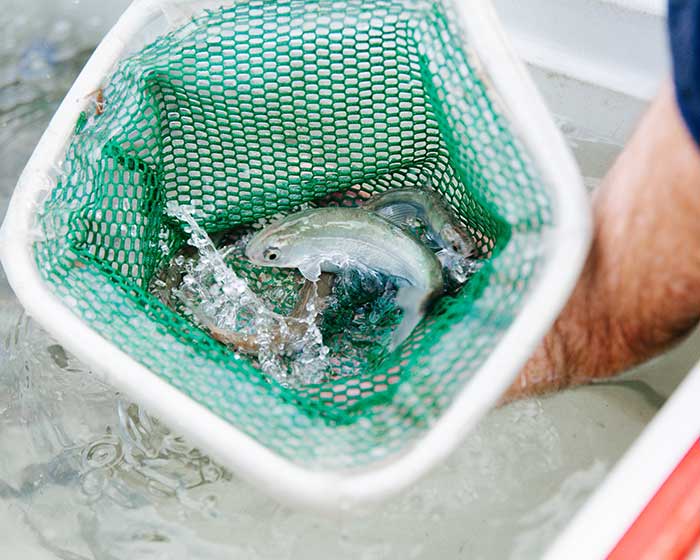
One emergency action involved small airplanes and Washington State Ferries. In 2022, partners flew nearly 12,000 offspring of kokanee that biologists flew and ferried to an Orcas Island hatchery two years earlier.
Recovery partners are considering expanding the use of remote stream incubators – small metal boxes containing gravel and fertilized kokanee eggs that are placed alongside a stream with water flowing through the eggs and gravel – in lake tributaries. After the incubating eggs have hatched, the young kokanee can swim directly into the stream and eventually into Lake Sammamish, where they will spend three or four years feeding and growing before returning to their home stream to spawn.
“I am thrilled that we are seeing such a strong return of one of our most culturally and environmentally significant species, our very own ‘little red fish’,” said King County Councilmember Claudia Balducci. “This is the result of years of dedicated, careful collaboration with our tribal, local, and community partners. It is a triumph that reminds us that, while human activity helped contribute to the decline of this species, we also have the power to act differently and help our ecosystem recover and heal.”
The Lake Sammamish Kokanee Work Group includes residents who live in the surrounding watershed, recreational fishers, the Snoqualmie Indian Tribe, the cities of Bellevue, Issaquah, Sammamish, and Redmond, the U.S. Fish and Wildlife Service, the Washington Department of Fish and Wildlife, Washington State Parks, Trout Unlimited, Mid-Sound Fisheries Enhancement Group, Mountains to Sound Greenway Trust, Washington Sensible Shorelines Association, Friends of Issaquah Salmon Hatchery, Save Lake Sammamish, Friends of Pine Lake, Friends of Sammamish State Park, and Long Live the Kings.
“Trout Unlimited is thrilled to witness the remarkable return of Lake Sammamish kokanee salmon this season,” said David Kyle, Lake Washington Basin Program Manager, Trout Unlimited. “This milestone reflects the dedication of a passionate community that has committed nearly two decades to bringing these iconic ‘little red fish’ back from the brink. It’s a testament to what’s possible when people come together not out of obligation, but out of deep care for the natural heritage of our region.”
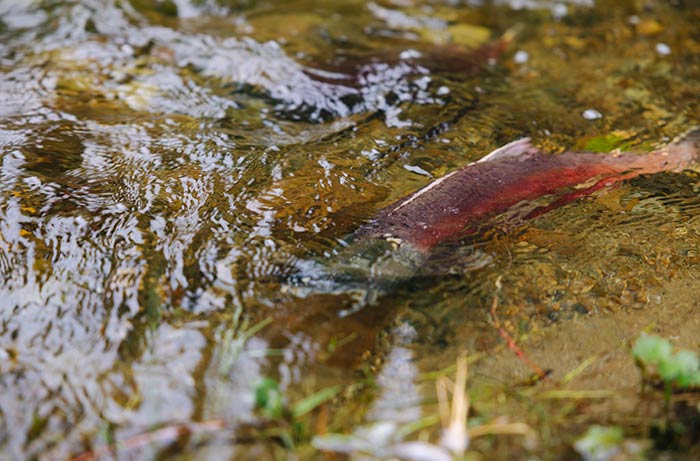
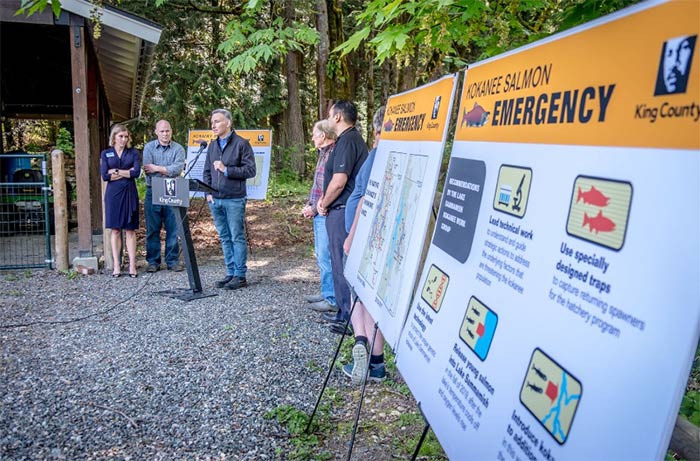
Multimedia
- VIDEO: From extinction's edge to potential recovery
- PHOTO GALLERY: Promising signs for Lake Sammamish kokanee recovery
- VIDEO: Possible breakthrough for Lake Sammamish kokanee salmon
- TRACKS: An interactive map of environmental stewardship in King County
Resources
Quotes
The promising signs of a sustainable recovery for native kokanee salmon reflect the incredible work of our employees and partners – and it inspires real hope for the natural environment of our region. While there is still more work to do, the progress we have made demonstrates what we can accomplish when we mobilize resources and unify efforts to achieve common goals.
For Snoqualmie people, we’re born into this, and we understand our connection to these places, to the fish, but I think that something so unique about our Lake Sammamish and our little red fish is how it brings everyone together. What we’ve been able to achieve with our surrounding communities is something really special to see.
Trout Unlimited is thrilled to witness the remarkable return of Lake Sammamish kokanee salmon this season. This milestone reflects the dedication of a passionate community that has committed nearly two decades to bringing these iconic ‘little red fish’ back from the brink. It’s a testament to what’s possible when people come together not out of obligation, but out of deep care for the natural heritage of our region.
I am thrilled that we are seeing such a strong return of one of our most culturally and environmentally significant species, our very own ‘little red fish.’ This is the result of years of dedicated, careful collaboration with our tribal, local, and community partners. It is a triumph that reminds us that, while human activity helped contribute to the decline of this species, we also have the power to act differently and help our ecosystem recover and heal.
Contact
Doug Williams, Department of Natural Resources and Parks, 206-477-4543
Visit our Newsroom for additional resources

 Translate
Translate